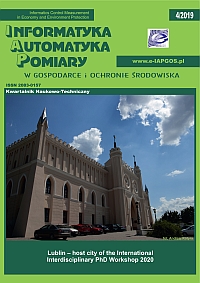Bannat A.: Ein Assistenzsystem zur digitalen Werker-Unterstützung in der industriellen Produktion. TU München, 2014.
Bauernhansl T., ten Hompel M., Vogel-Heuser B. (Eds.): Industrie 4.0 in Produktion, Automatisierung und Logistik: Anwendung, Technologien, Migration. Springer Vieweg, Wiesbaden 2014.
DOI: https://doi.org/10.1007/978-3-658-04682-8
Braseth A. O.: Information-Rich Design: A Concept for Large-Screen Display Graphics: Design Principles and Graphic Elements for Real-World Complex Processes. Norwegian University of Science and Technology, 2015.
Bullinger H.-J.: Ergonomie: Produkt- und Arbeitsplatzgestaltung. Vieweg+Teubner Verlag, Wiesbaden 1994.
DOI: https://doi.org/10.1007/978-3-663-12094-0_13
Bullinger-Hoffmann A. C., Mühlstedt J.: Homo Sapiens Digitalis – Virtuelle Ergonomie und digitale Menschmodelle. Springer Vieweg, Wiesbaden 2016.
DOI: https://doi.org/10.1007/978-3-662-50459-8
Dostal W., Kamp A.-W., Lahner M., Seessle W. P.: Flexible Fertigungssysteme und Arbeitsplatzstrukturen. W. Kohlhammer GmbH, Stuttgart 1982.
Endsley M. R., Jones D. G.: Designing for situation awareness: An approach to user-centered design. CRC Press, Boca Raton 2011.
Freitag M., Molzow-Voit F., Quandt M., Spöttl G.: Aktuelle Entwicklung der Robotik und ihre Implikationen für den Menschen. In: Molzow-Voit F., Quandt M., Freitag M., Spöttl G. (Eds.): Robotik in der Logistik: Qualifizierung für Fachkräfte und Entscheider. Springer Gabler, Wiesbaden 2016, 9–20.
DOI: https://doi.org/10.1007/978-3-658-08575-9_2
Goschke T.: Aktivationstheoretische Ansätze: Motivation, Emotion, Volition. TU Dresden, 2013.
Grendel H., Larek R., Riedel F., Wagner J. C.: Enabling manual assembly and integration of aerospace structures for Industry 4.0 – methods. New Production Technologies in Aerospace Industry: MIC Proceedings 2017, Hannover 2017.
DOI: https://doi.org/10.1016/j.promfg.2017.11.004
Hackl B., Wagner M., Attmer L., Baumann D.: New Work: Auf dem Weg zur neuen Arbeitswelt: Management-Impulse, Praxisbeispiele, Studien. Springer Gabler, Wiesbaden 2017.
DOI: https://doi.org/10.1007/978-3-658-16266-5
ten Hompel M., Henke M.: Logistik 4.0. in SpringerLink, Industrie 4.0 in Produktion, Automatisierung und Logistik. In: Bauernhansl T., ten Hompel M., Vogel-Heuser B. (Eds.): Anwendung, Technologien, Migration. Springer Vieweg, Wiesbaden 2014, 615–624.
DOI: https://doi.org/10.1007/978-3-658-04682-8_32
Kunert G., Pawletta T.: Generating of Task-Based Controls for Joint-Arm Robots with Simulation-based Reinforcement Learning. SNE 28(4), 2018, 149–156.
DOI: https://doi.org/10.11128/sne.28.tn.10442
Kunert G., Pawletta T.: Generierung von Steuerungen für Gelenkarmroboter mit simulationsbasiertem Reinforcement-Learning. 24. Symposium Simulationstechnik ASIM 2018, 56, 2018.
Larek R., Grendel H., Wagner J. C., Riedel F.: Industry 4.0 in manual assembly processes – a concept for real time production steering and decision making. Procedia CIRP 79, 2019, 165–169.
DOI: https://doi.org/10.1016/j.procir.2019.02.038
Lee J. D., Wickens Ch. D., Liu Y., Boyle L. Ng: An introduction to human factors engineering: A beta version. CreateSpace Independent Publishing Platform, 2017.
Lorenz M., Rüßmann M., Strack R., Lueth K. L., Bolle M.: Man and Machine in Industry 4.0: How Will Technology Transform the Industrial Workforce Through 2025? BCC The Boston Consulting Group, 2015.
Michalos G. et al.: ROBO-PARTNER: Seamless Human-Robot Cooperation for Intelligent, Flexible and Safe Operations in the Assembly Factories of the Future. Procedia CIRP 23, 2014, 71–76.
DOI: https://doi.org/10.1016/j.procir.2014.10.079
Molzow-Voit F., Quandt M., Freitag M., Spöttl G. (Eds.): Robotik in der Logistik: Qualifizierung für Fachkräfte und Entscheider. Springer Gabler, Wiesbaden 2016.
DOI: https://doi.org/10.1007/978-3-658-08575-9
Norman D. A.: The design of everyday things. Basic Books, New York 2013.
Onnasch L., Maier X., Jürgensohn T.: Mensch-Roboter-Interaktion – Eine Taxonomie für alle Anwendungsfälle. Bundesanstalt für Arbeitsschutz und Arbeitsmedizin 2016.
Sanders E. B.-N., Stappers P. J.: Co-creation and the new landscapes of design. CoDesign 4(1), 2008, 5–18.
DOI: https://doi.org/10.1080/15710880701875068
Spath D. et al. (Eds.): Produktionsarbeit der Zukunft – Industrie 4.0: Fraunhofer Verlag, 2013.
Stark J., Mota R. R.C., Sharlin E.: Personal Space Intrusion in Human-Robot Collaboration. Companion of the 2018 ACM/IEEE International Conference on Human-Robot Interaction – HRI '18, 2018, 245–246.
DOI: https://doi.org/10.1145/3173386.3176998
Vogel-Heuser B., Bauernhansl T., ten Hompel M.: Handbuch Industrie 4.0: Produktion. Springer-Verlag GmbH Deutschland, Berlin 2017.
DOI: https://doi.org/10.1007/978-3-662-45279-0
Wagner J. C., Larek R., Nüchter A.: Der Maximalnetzplan als Neuinterpretation der Netzplantechnik. Proc. of Wismarer Wirtschaftsinformatik-Tage 11, 2018, 123–136.
Westkämper E., Spath D., Constantinescu C., Lentes J.: Digitale Produktion. Springer-Verlag Berlin Heidelberg, Berlin 2013.
DOI: https://doi.org/10.1007/978-3-642-20259-9
Yerkes R. M., Dodson J. D.: The relation of strength of stimulus to rapidity of habit-formation. J. Comp. Neurol. Psychol. 18(5), 1908, 459–482.
DOI: https://doi.org/10.1002/cne.920180503
Ziegler J.: Wearables im industriellen Einsatz: Befähigung zu mobiler IT-gestützter Arbeit durch verteilte tragbare Benutzungsschnittstellen. 2015.
Acatech: Innovationspotenziale der Mensch-Maschine-Interaktion. Herbert Utz Verlag GmbH, Munich 2016.
Acatech: Umsetzungsempfehlungen für das Zukunftsprojekt Industrie 4.0: Abschlussbericht des Arbeitskreises Industrie 4.0. Deutschlands Zukunft als Produktionsstandort sichern, Apr. 2013.
AiF Projekt GmbH: ZIM-Erfolgsbeispiel: Exakt montiert – sicher verpackt – zufriedene Kunden. Jan. 2018.
Bundesministerium für Arbeit und Soziales Abteilung Grundsatzfragen des Sozialstaats, der Arbeitswelt und der sozialen Marktwirtschaft: WEISS BUCH Arbeiten 4.0: Arbeit weiter denken. 2017.
Bundesministerium für Bildung und Forschung: Zukunft der Arbeit: Innovationen für die Arbeit von morgen. 2016.
Fraunhofer IAO: Arbeitswelten der Zukunft: Jahresbericht. Fraunhofer-Gesellschaft 2017.
International Ergonomics Association IEA, Definition and Domains of Ergonomics. https://www.iea.cc/ (Available: 25.02.2019).
IXDS Human Industries Venture: Without design, Industry 4.0 will fail: Six challenges where design accelerates successful digital transformation in manufacturing. 2018, https://www.ixds.com/without-design-industry-40-will-fail (Available: 27.06.2018).
KUKA AG: Hello Industrie 4.0 – we go digital. https://www.nebbiolo.tech/wp-content/uploads/KUKA-Industrie-4.0.pdf (Available: 19.06.2018).
Steelcase Inc.: 360°Focus_Creativity: Creativity, Work and the Physical Environment. 17-0005439, 2017.







